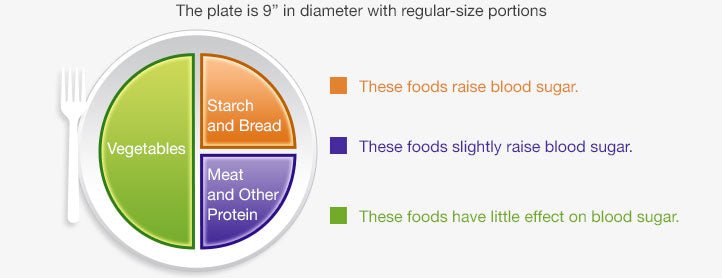There is no an product in your account
please add some product to cart.

Glycemic Index (GI)

A Glycemic index is the measurement of the impact that carbohydrate-containing foods (starches) have on our blood sugar. Low glycemic index foods will release glucose slower and more steadily into your bloodstream. This will prevent spikes (fast raise) in your blood sugar. Conversely, a food with a high glycemic index will cause a very rapid rise in blood sugar (glucose) levels or what we refer to as a ‘glucose dump’. There is a direct correlation to chronic spikes in blood sugar and increasing inflammation. The more inflammation present in the body – the lower your pain tolerance. In addition, higher degrees of inflammation will contribute to damage to nerves and internal organs, resulting in chronic disease and illness.
Over the past 15 years, low-GI diets have been associated with decreased risk of cardiovascular disease, type 2 diabetes, metabolic syndrome, peripheral neuropathy, stroke, depression, chronic kidney disease, formation of gall stones, neural tube defects, formation of uterine fibroids, and cancers of the breast, colon, prostate, and pancreas. Taking advantage of these potential health benefits can be as simple as sticking with whole, natural foods that are either low or very low in their GI value.
Glycemic Index (GI) Rating System
Most healthcare organizations use a “high,” medium” and “low” rating system for GI. Using this system, foods get classified in the following way:
| Very Low GI | Low GI | Medium GI | High GI |
| 0-20 | 21-55 | 56-69 | 70 or greater |
| Food Group | Very Low GI | Low GI | Medium GI | High GI |
| Vegetables | asparagus | carrots (raw) | beets | carrots (cooked) |
| avocados | chilies | corn | parsnips | |
| beet greens | eggplant | leeks | potatoes, white | |
| bok choy | garlic | potatoes, sweet | ||
| broccoli | Onions | |||
| brussel sprouts | red peppers | |||
| cabbage | sea vegetables | |||
| cauliflower | spaghetti squash | |||
| celery | winter squash | |||
| collard greens | yam | |||
| cucumbers | ||||
| fennel | ||||
| green beans | ||||
| kale | ||||
| mushrooms | ||||
| mustard greens | ||||
| olives | ||||
| olive oil | ||||
| Romaine and other lettuce | ||||
| spinach | ||||
| summer squash | ||||
| swiss chard | ||||
| tomatoes | ||||
| turnip greens | ||||
| Food Group | Very Low GI | Low GI | Medium GI | High GI |
| Fruits | apples | cantaloupe | banana (over-ripe) | |
| apricot | figs | dates | ||
| bananas (under-ripe) | kiwi fruit | watermelon | ||
| blueberries | papaya | |||
| cherries | pineapple | |||
| cranberries | raisins | |||
| grapefruit | ||||
| grapes | ||||
| lemons/limes | ||||
| mango | ||||
| oranges | ||||
| peach | ||||
| pears | ||||
| plums | ||||
| prunes | ||||
| raspberries | ||||
| strawberries | ||||
| Food Group | Very Low GI | Low GI | Medium GI | High GI |
|
Nuts & Seeds (all nuts & seeds rank in Low GI group) |
almonds | cashews | ||
| flaxseeds | pumpkin seeds | |||
| hazelnuts (filberts) | walnuts | |||
| macadamia nuts | ||||
| peanuts | ||||
| pecans | ||||
| sesame seeds | ||||
| sunflower seeds | ||||
| walnuts | ||||
| Food Group | Very Low GI | Low GI | Medium GI | High GI |
| Beans & legumes(all beans & legumes rank in Low GI group) | soybeans | black beans | ||
| tofu | black eyed peas | |||
| tempeh | dried peas | |||
| garbanzo beans (chick peas) | ||||
| kidney beans | ||||
| lentils | ||||
| lima beans | ||||
| navy beans | ||||
| pinto beans | ||||
| Food Group | Very Low GI | Low GI | Medium GI | High GI |
|
Seafood (all seafood rank in Low GI group) |
cod | scallops | ||
| salmon | ||||
| sardines | ||||
| shrimp | ||||
| tuna | ||||
| Food Group | Very Low GI | Low GI | Medium GI | High GI |
|
Meats (all meats rank in very low GI) |
beef, grass-fed | |||
| chicken-pasture-raised | ||||
| lamb, grass-fed | ||||
| turkey, pasture-raised | ||||
| Food Group | Very Low GI | Low GI | Medium GI | High GI |
| Dairy |
Whole eggs | cheese | ||
| cow’s milk | ||||
| yogurt | ||||
| Food Group | Very Low GI | Low GI | Medium GI | High GI |
| Grains | barley | basmati rice, brown | Bagels | |
| brown rice | couscous | Cheerios (cereal) | ||
| buckwheat | cornmeal | chips & pretzels | ||
| oat groats | rolled oats, old fashioned | corn flakes | ||
| quinoa | wild rice | crackers | ||
| rye | Grape nuts (cereal) | |||
| spelt | instant oatmeal | |||
| whole wheat | Jasmine rice | |||
| rice cakes | ||||
| Rice crispies (cereal) | ||||
| Total (cereal) | ||||
| white rice (instant, long grain, basmati) | ||||
| white bread | ||||
| wheat bread | ||||
| Food Group | Very Low GI | Low GI | Medium GI | High GI |
|
Herbs & Spices (all herbs & spices rank in Low GI group) |
black pepper | |||
| cayenne & chili pepper | ||||
| cillantro & coriander seeds | ||||
| cinnamon | ||||
| cloves | ||||
| cumin seeds | ||||
| dill | ||||
| fenugreek | ||||
| garlic | ||||
| ginger | ||||
| mint | ||||
| mustard seeds | ||||
| oregano | ||||
| parsley | ||||
| peppermint | ||||
| rosemary | ||||
| sage | ||||
| thyme | ||||
| turmeric |
References
For Established Glycemic Index values, We Used the Following Databases and Publications
Atkinson FS, Foster-Powell K, Brand-Miller JC. International Tables of Glycemic Index and Glycemic Load Values: 2008. Diabetes Care 2008; 31(12).
Foster-Powell K, Holt HA, and Brand-Miller JC. International table of glycemic index and glycemic load values: 2002. Am J Clin Nutr2002;76:5—56.
Human Nutrition Unit, School of Molecular Biosciences, University of Sydney, Sydney, Australia. (2013). GI Foods Advanced Search Database. Online at http://www.glycemicindex.com/foodSearch.php.
National Cancer Institute (NCI). DHQ Nutrient Database. Applied Research: Cancer Control and Populations Sciences. National Institutes of Health, Bethesda, MD. Available online at: http://appliedresearch.cancer.gov/DHQ/database/
In Addition We Used the Following Non-Database References
Castro-Quezada I, Sanchez-Villegas A, Diaz-Gonzalez V, et al. Relationship between dietary glycemic index, dietary glycemic load and major cardiovascular events in the PREDIMED study. European Geriatric Medicine, Volume 4, Supplement 1, September 2013, Pages S128-S129.
Frost G and Dornhorst A. Glycemic Index. Encyclopedia of Human Nutrition (Third Edition), 2013, Pages 393-398.
Kumar SB and Prabhansankar P. Low glycemic index ingredients and modified starches in wheat based food processing: A review Review. Trends in Food Science & Technology, Volume 35, Issue 1, January 2014, Pages 32-41.
Lin CS, Kimokoti RW, Brown LS, et al. Methodology for Adding Glycemic Index to the National Health and Nutrition Examination Survey Nutrient Database. Journal of the Academy of Nutrition and Dietetics, Volume 112, Issue 11, November 2012, Pages 1843-1851.
Ma XY, Liu JP, and Song ZY. Glycemic load, glycemic index and risk of cardiovascular diseases: Meta-analyses of prospective studies. Atherosclerosis, Volume 223, Issue 2, August 2012, Pages 491-496.
O’Reilly J, Wong SH, and Chen Y. Glycaemic index, glycaemic load and exercise performance. Sports Med. 2010 Jan 1;40(1):27-39.
Wolever TM. Is glycaemic index (GI) a valid measure of carbohydrate quality? Eur J Clin Nutr. 2013 May;67(5):522-31. doi: 10.1038/ejcn.2013.27. Epub 2013 Feb 13.


